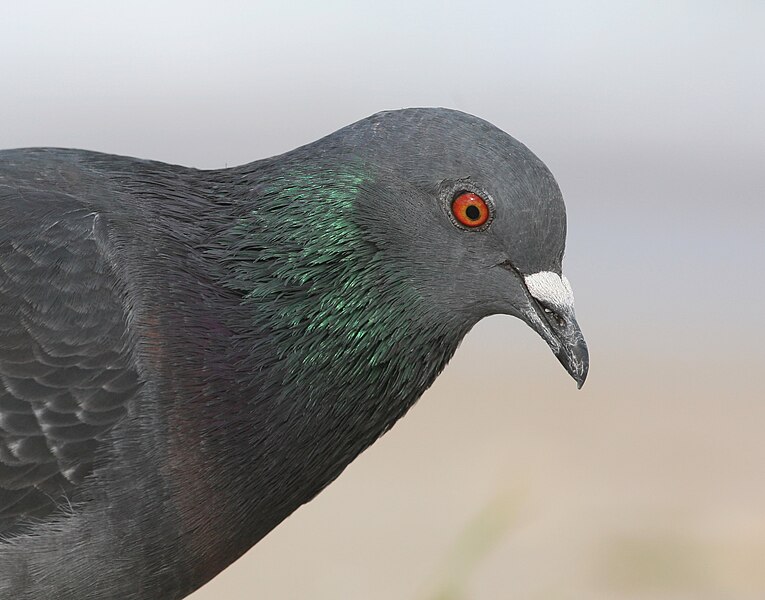To get rid of birds in your loft, seal entry points, use visual deterrents, employ sound devices, and consider professional removal services if needed.
Ah, the joys of loft living – high ceilings, great views, and… unexpected feathered roommates? If you’ve found yourself sharing your space with winged squatters, you’re not alone. I’ve been there, complete with the bird-poop-stained T-shirt to prove it. These feathered freeloaders might think they’ve hit the jackpot with their rent-free penthouse, but we know better. It’s time to serve them their eviction notice!
Fear not, fellow bird-battling comrade! I’m here to guide you through the sometimes messy journey of reclaiming your loft. We’ll explore everything from DIY solutions to professional interventions, all while keeping things humane (because we’re not monsters, just humans who want our personal space back).
Key Takeaways:
- Birds in lofts can cause damage and health hazards (not to mention unwanted wake-up calls)
- Humane removal methods are essential and often required by law (no bird-icide here, folks)
- Prevention is key to long-term bird-free loft living (think of it as avian-proofing)
- DIY solutions can be effective, but professional help may be necessary for severe infestations (sometimes you need to call in the bird SWAT team)
Common Types of Birds Found in Lofts
- Pigeons (Rock Doves): The classic urban squatter. These birds are adaptable, prolific breeders, and notoriously difficult to discourage once they’ve settled in.
- Starlings: These small, speckled birds are known for their ability to squeeze through tiny openings and their tendency to nest in large groups.
- House Sparrows: Small but mighty, these little guys can slip through the tiniest cracks and are expert nest-builders.
- Swallows: While they’re seasonal visitors, swallows can cause issues with their mud nests and tendency to return to the same nesting sites year after year.
- Jackdaws: Part of the crow family, these intelligent birds are known for their ability to exploit weaknesses in buildings to gain entry.
- Seagulls: In coastal areas, these large birds can become a major problem, especially during nesting season.
- Feral Pigeons: Often confused with rock doves, these are descendants of domesticated pigeons that have adapted to urban living.
- Wood Pigeons: Larger than their city-dwelling cousins, wood pigeons can cause significant damage due to their size.
- Barn Owls: While less common, these nocturnal birds sometimes take up residence in lofts, especially in more rural areas.
- Kestrels: Another rural loft-dweller, these small falcons might seem cool to have around, but can cause issues with noise and mess.
Remember, each of these birds has its own quirks and challenges when it comes to removal and prevention. Knowing which species you’re dealing with can help tailor your bird-busting strategy for maximum effectiveness!
Why Birds Love Your Loft (and Why You Don’t Love Them Back)
Your loft is basically the Ritz-Carlton of the bird world. It’s high up (penthouse views!), sheltered from the elements (no rain on this parade), and free from predators (sorry, Mr. Whiskers, you can’t reach up here). It’s like we’ve inadvertently created the perfect bird Airbnb.
But here’s the rub – while these feathered tenants are living it up, you’re left dealing with their, ahem, “gifts.” And by gifts, I mean droppings, nests, and noise. It’s like having the world’s worst housemates who never chip in for rent or clean up after themselves.
Health and Property Risks
Now, I hate to be a buzzkill, but we need to talk about the not-so-funny side of this airborne invasion. Bird droppings aren’t just unsightly – they’re a health hazard. They can carry all sorts of nasty diseases with names that sound like rejected Hogwarts spells (looking at you, histoplasmosis).
And let’s not forget about the damage to your property. Those cute little beaks? Yeah, they’re not so cute when they’re pecking away at your insulation or wiring. Before you know it, your loft could look like it’s been through a feathery apocalypse.
But don’t worry, my bird-beleaguered friend. Knowledge is power, and now that we know what we’re up against, we can start planning our counterattack.
How to Get Rid of Birds in Your Loft
Dealing with birds in your loft can be a frustrating and messy ordeal. Whether you’re battling persistent pigeons, sneaky starlings, or other feathered intruders, reclaiming your space requires a mix of determination, creativity, and sometimes, professional help.
Follow these steps to reclaim your loft from feathered intruders:
1. The Great Seal-Up: Keeping Birds Out
Alright, fellow bird battler, it’s time to turn your loft into an avian-proof fortress. We’re talking Fort Knox levels of security here, but instead of gold, we’re protecting your sanity (and your ability to sleep past dawn).
Identifying and Blocking Entry Points
First things first, we need to find out how these feathered intruders are sneaking in. Time to channel your inner Sherlock Holmes! Look for gaps in your roof tiles, holes in your soffits, or any other suspicious openings. Remember, if you can stick a finger in it, a determined bird can probably squeeze through it.
Pro tip: Wait until dusk and then stand outside. Look for any spots where light is peeking through your roof or walls. Congratulations, you’ve just found a bird’s secret entrance!
Materials to Use for Sealing
Now that we’ve identified the break-in points, it’s time to seal them up. Here’s where things get fun (and potentially messy). You’ve got options:
- Mesh wire: It’s like a bouncer for your loft. “Sorry, bird. You’re not on the list.”
- Expandable foam: The DIYer’s best friend. Just be prepared to wear it as an unintended hair product.
- Caulk: For those tiny cracks that birds see as their personal VIP entrance.
A word of caution from someone who’s been there: When using expandable foam, remember that “expandable” is not just a cute name. I once ended up with a foam mohawk that would make any punk rocker jealous. Learn from my mistakes, folks.
The Importance of Proper Ventilation
Now, before you go sealing every nook and cranny, remember: your loft needs to breathe too. We’re aiming for a bird-free zone, not a sweat lodge.
Make sure you’re using materials that allow for airflow where necessary. There are specialized vents and covers designed to keep birds out while letting your loft ventilate. Trust me, you don’t want to trade your bird problem for a mold problem. That’s like swapping Mötley Crüe for Nickelback – arguably worse and definitely smellier.
The goal here is to make your loft as inhospitable to birds as possible, while still keeping it a cozy haven for you. It’s a delicate balance, like trying to eat spaghetti while wearing a white shirt – challenging, but not impossible.
2. Visual Deterrents: Scaring Birds with Style
Welcome to the fun part, my fellow bird-busting buddy! It’s time to turn your loft into a house of horrors for our feathered foes. Don’t worry, we’re not talking about anything actually scary – just stuff that’ll make birds say, “Nah, I’ll find somewhere else to crash.”
Reflective Objects and How They Work
First up, let’s talk about making your loft look like a disco ball (minus the funky music). Birds aren’t fans of unpredictable light patterns – it messes with their navigation and makes them nervous. So, we’re going to use that to our advantage.
Hang up some old CDs, reflective tape, or even those mylar balloons from your last birthday party. When the sun hits these shiny objects, it creates a light show that birds find about as appealing as we find their 5 AM wake-up calls.
Pro tip: For extra effectiveness, place these reflective objects near your birds’ favorite entry points. It’s like putting a bouncer right at the club’s door – except this bouncer is just a really shiny piece of plastic.
Bird Spikes: Not as Metal as They Sound
Now, don’t let the name fool you. We’re not turning your loft into a medieval torture chamber. Bird spikes are actually a humane way to keep birds from landing on ledges, railings, or other flat surfaces.
These spikes aren’t sharp enough to hurt the birds; they just make it impossible for them to get comfortable. It’s like trying to take a nap on a bed of Legos – technically possible, but why would you want to?
Installation is pretty straightforward, but fair warning: you might feel a bit like a supervillain setting booby traps. Embrace it. Maybe practice your evil laugh while you’re at it.
Fake Predators: When Plastic Owls Become Your New Loft Decor
Last but not least, let’s talk about the classic fake predator trick. This is where you get to channel your inner Steven Spielberg and create a horror movie set – for birds.
Plastic owls are the go-to here. They’re the avian equivalent of those cardboard cutout police cars – not actually dangerous, but enough to make you think twice.
But here’s the kicker – birds aren’t stupid (well, mostly). If your owl hasn’t moved in weeks, they’re going to catch on. So, you’ve got to keep things interesting. Move your owl around regularly. Give him a name. Heck, why not dress him up for the holidays? (Owl Capone for Halloween, anyone?)
You can also mix it up with other predator decoys like hawks or even snakes. Before you know it, your loft will look like a bizarre wildlife preserve. But hey, if it keeps the birds away and gives your neighbors something to talk about, it’s a win-win!
Remember, the key to visual deterrents is variety and movement. Keep things unpredictable, and those birds will decide your loft is just too much drama for their taste.
3. Sound Off: Noise Deterrents That Won’t Drive You Batty
Alright, my acoustically adventurous amigo, it’s time to dive into the world of sonic warfare against our feathered foes. We’re about to turn your loft into the bird equivalent of that one pub with the terrible karaoke night – a place they’ll actively avoid.
Ultrasonic Devices: The Silent Disco for Birds
First up, let’s talk about ultrasonic devices. These nifty gadgets emit high-frequency sounds that birds find about as pleasant as nails on a chalkboard. The best part? It’s all happening at a frequency that human ears can’t detect.
It’s like hosting a secret rave that only birds can hear – and absolutely hate. You’ll be sitting there, enjoying your morning coffee, while unbeknownst to you, there’s an avian EDM festival from hell going on right above your head.
Fair warning though: while these devices are generally effective, some birds are the equivalent of that one friend who can sleep through anything. They might need a bit more convincing to vamoose.
Recorded Predator Calls: When Your Loft Becomes a Nature Documentary
Next up in our audio arsenal – recorded predator calls. This is where things get really fun. You’re essentially turning your loft into the bird version of a haunted house.
Imagine a pigeon settling in for a nice nap, only to be jolted awake by the screech of a hawk. It’s like waking up to find the Boogeyman doing Pilates at the foot of your bed – absolutely terrifying, and definitely not conducive to staying put.
You can find recordings of various predator calls online. Mix it up with some hawk screeches, owl hoots, and even the occasional fox bark. Your loft will sound like a wild animal convention, and the birds will be booking their flights out of there faster than you can say “migration.”
The Fine Line Between Deterring Birds and Annoying Neighbors
Now, here’s where we need to tread carefully. While you’re orchestrating this symphony of terror for the birds, remember that your neighbors might not appreciate your newfound passion for wildlife audio.
The key is to find a balance. Use your sonic deterrents during the day when ambient noise is higher. Maybe avoid playing the ‘Sounds of the Savannah’ at full blast at 3 AM, unless you want to risk becoming the neighborhood’s designated weirdo.
Also, consider chatting with your neighbors about your bird problem. They might be dealing with the same issue and appreciate your proactive approach. Or they might think you’ve finally lost it and are building an ark in your loft. Either way, it’s good to keep them in the loop.
4. The Chemical Approach: Smells That Repel (Birds and Possibly Dates)
Alright, odor aficionados, it’s time to dive into the world of olfactory offense. We’re about to turn your loft into a scent-sational bird deterrent that might just keep away more than our feathered friends. Hope you’re ready to embrace your new role as the neighborhood’s unofficial aromatherapist!
Bird Repellent Gels and Sprays
First up, we’ve got the heavy hitters – commercial bird repellent gels and sprays. These products are like cologne for your loft, if cologne was designed to make everyone run away screaming.
These repellents usually contain ingredients that birds find about as appealing as we find the idea of eating a sandcastle. Think methyl anthranilate (that’s grape flavoring to us humans) or polybutene (a sticky substance that birds hate to touch).
Apply these to areas where birds like to perch, and watch as they suddenly decide your loft isn’t the cool hang-out spot they thought it was. Just be warned: some of these products can be pretty potent. You might find yourself wondering if you’ve accidentally created a chemical warfare zone instead of a bird deterrent.
Natural Alternatives: When Your Loft Smells Like a Spice Rack
If you’re not keen on turning your loft into a science experiment, fear not! There are plenty of natural alternatives that can be just as effective (and might make your space smell like a fancy restaurant instead of a lab).
Birds aren’t fans of strong spices. So, why not raid your kitchen cupboards? Sprinkle some chili powder, cinnamon, or black pepper in problem areas. You could even make a spray with water and essential oils like peppermint or citrus.
Fair warning: you might suddenly find yourself craving curry or mojitos every time you enter your loft. On the bright side, at least you’ll smell delicious while you’re bird-free!
Safety Considerations for Pets and Humans
Now, before you go full Gordon Ramsay on your loft, let’s talk safety. While these smells might make birds turn tail and fly, we don’t want them causing problems for you, your pets, or your unsuspecting visitors.
If you’re using commercial repellents, always follow the instructions carefully. These products are designed to be safe when used correctly, but they’re not exactly something you want to marinate in.
For natural alternatives, remember that some essential oils can be harmful to pets, especially cats. And while your dog might love rolling in that chili powder, it’s probably not great for their skin (or your furniture).
Also, consider the impact on yourself. You might think you’re okay with your loft smelling like a Thanksgiving dinner 24/7, but after a week of cinnamon-scented dreams, you might change your mind.
The key is moderation. Start with small amounts and see what works. You’re aiming for “pleasantly fragrant with a hint of bird repellent,” not “walking into a spice market during a heatwave.”
Call in the Pros: When to Wave the White Flag
Sometimes, even the most valiant DIY efforts fall short.
Here are signs it’s time to call in the professionals:
- The bird population in your loft seems to be growing despite your best efforts.
- You’ve noticed extensive damage to your loft’s structure or insulation.
- There’s an overwhelming amount of droppings or nesting material.
- You’re dealing with protected species that require special handling.
- Your DIY methods have been ineffective for several weeks or months.
When you hire professionals, expect a comprehensive approach:
- Thorough inspection of your loft and surrounding areas.
- Identification of all entry points and nesting sites.
- Humane removal of birds and nests.
- Cleaning and sanitization of affected areas.
- Installation of deterrents and preventative measures.
- Follow-up visits to ensure the problem doesn’t recur.
Cost considerations vary widely depending on the extent of the infestation and the size of your loft. You might be looking at anywhere from a few hundred to several thousand dollars. While it’s a significant investment, consider it against the potential cost of ongoing damage to your property.
When choosing a service, look for:
- Proper licensing and insurance
- Experience with your specific bird problem
- Use of humane removal methods
- Positive reviews and testimonials
- Detailed written estimates
- Guarantees or warranties on their work
Remember, the cheapest option isn’t always the best. You’re paying for expertise, safety, and long-term results. A reputable service will not only solve your current bird problem but also help prevent future infestations, making it a worthwhile investment in your loft’s future.
Preventing the Return of the Winged Menace
Congratulations, bird-busting champion! You’ve reclaimed your loft from the feathered invaders. But as any good action movie hero knows, the sequel is always just around the corner. Let’s make sure “Return of the Birds: Loft Revenge” never makes it to production.
Regular Maintenance Tips
Think of your loft as a fortified castle. You’ve won the battle, but the war against winged intruders is eternal. Here’s how to keep your defenses strong:
- Monthly inspections: Give your loft a once-over every month. Look for any new gaps, loose materials, or suspicious feathers. It’s like a treasure hunt, except the treasure is peace of mind.
- Clean gutters regularly: Clogged gutters are like five-star hotels for birds. Keep them clear, and you’ll send those potential guests packing.
- Trim nearby trees: Don’t give birds a VIP lounge near your loft. Keep branches at least 6 feet away from your roof.
- Refresh deterrents: Your fake owl might be less convincing with a layer of dust. Give him a spa day every now and then.
- Check ventilation: Make sure your bird-proofing hasn’t accidentally turned your loft into a sauna. Nobody wants a sweaty bird problem.
Long-term Deterrent Strategies
Now, let’s talk about playing the long game. We’re not just preventing birds; we’re making your loft the least appealing bird resort in town.
- Install permanent barriers: Consider adding mesh or netting to potential entry points. It’s like an invisibility cloak for your loft – birds can’t nest in what they can’t see.
- Use scare tape: This reflective tape creates a disco ball effect that birds hate. Your loft might look like it’s ready for a rave, but at least it’ll be a bird-free rave.
- Motion-activated sprinklers: Nothing says “go away” like an unexpected shower. Plus, it’s hilarious to watch (just don’t forget it’s there when you go to check the mail).
- Change it up: Birds can get used to static deterrents. Keep them guessing by rotating your anti-bird arsenal.
Creating a Bird-Friendly Space Elsewhere (If You’re Feeling Generous)
I know, I know. After all this, why would you want to attract birds? But hear me out. By giving birds a more appealing option, you’re less likely to find them squatting in your loft.
- Install a bird feeder: Put it far from your house. It’s like setting up a bird nightclub on the other side of town.
- Plant bird-friendly trees: Give them a natural high-rise that isn’t your loft.
- Add a birdbath: Water features are like bird magnets. Just make sure it’s not so close that your loft becomes the after-party location.
Remember, the goal is to make your yard more appealing than your loft. It’s like offering a free buffet to keep people out of your fridge.
By following these tips, you’ll not only keep your loft bird-free but also maintain your status as the neighborhood’s premier bird relocation specialist. Who knows? You might even start to appreciate our feathered friends – as long as they’re appreciating your yard and not your loft.
Conclusion
Well, my feather-fighting friend, we’ve flown through the ins and outs of evicting your unwanted avian tenants. From turning your loft into a bird’s worst nightmare with spikes and sprays, to embracing your inner MacGyver with DIY solutions, you’re now armed with a veritable arsenal of bird-busting techniques. Remember, the key to victory lies in persistence, creativity, and perhaps a slight tolerance for the occasional bird pun.
So spread your wings and soar into action! Your loft is counting on you to transform it from a pigeon paradise back into the human haven it was meant to be. With these tips in your nest egg, you’re well on your way to reclaiming your space. Here’s to nights free from feathered interruptions, mornings without avian alarm clocks, and a loft that’s for the birds in name only. Now fly away and enjoy your newly reclaimed, bird-free roost!














